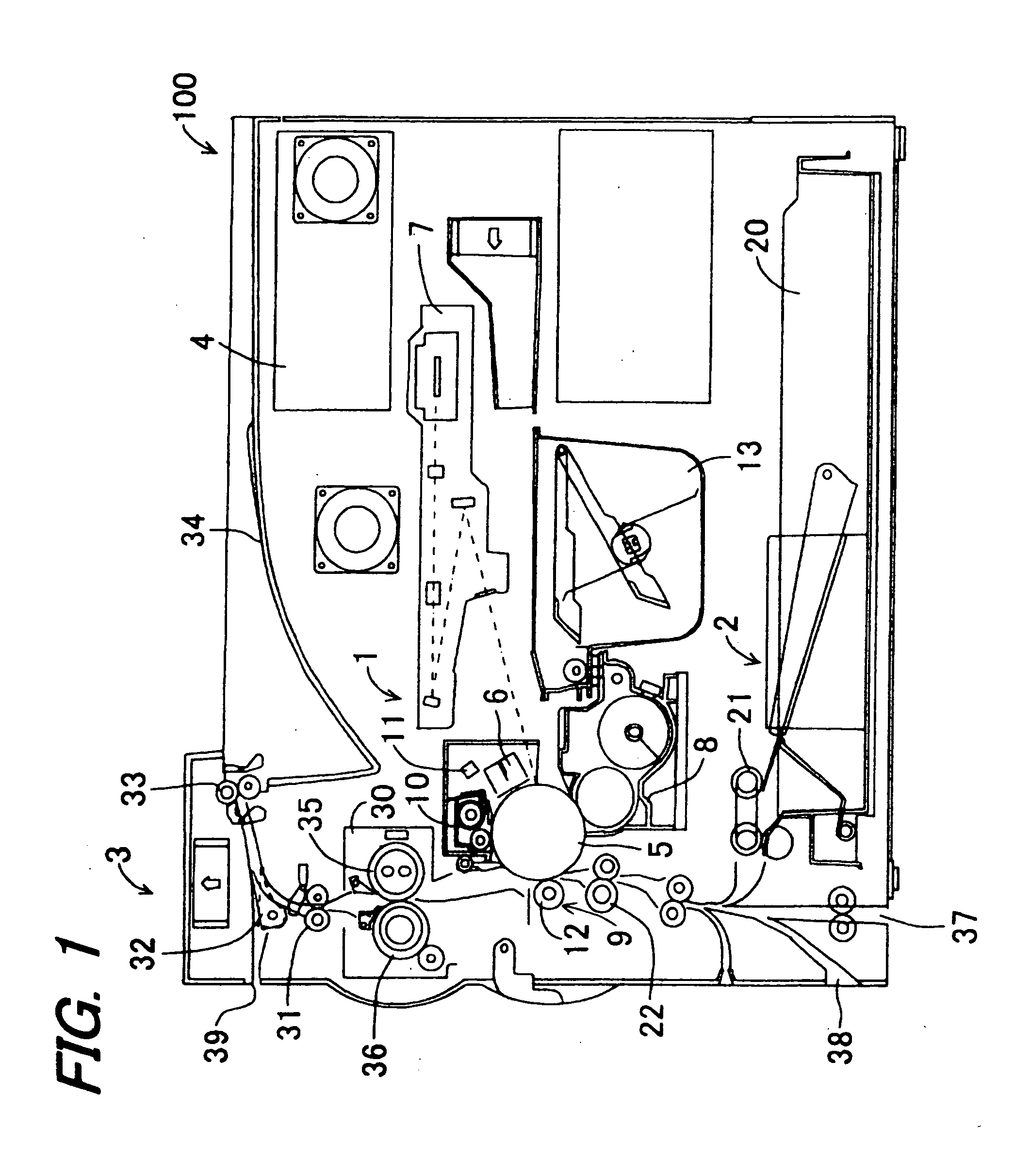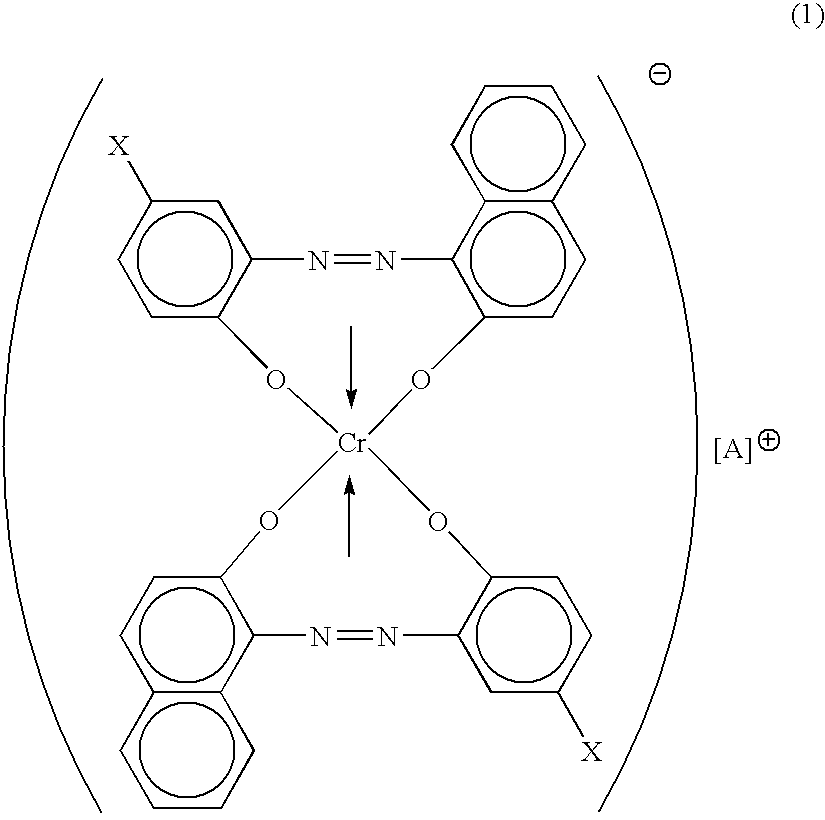Developing toner for electrostatic latent images, imaging forming method and image forming apparatus
- Summary
- Abstract
- Description
- Claims
- Application Information
AI Technical Summary
Benefits of technology
Problems solved by technology
Method used
Image
Examples
synthesis example 1
Synthesis of Polyalkylene Dispersant (a)
[0152] 40 parts of xylene and 20 parts of non-oxidized polypropylene (softening point: 152° C., trade name of products: Viscol 550P, manufactured by Sanyo Kasei Industry Co.) were charged in an autoclave made of stainless steel and, after sufficient nitrogen substitution for the inside of the autoclave, the temperature was elevated up to 170° C. under tight sealing. While maintaining the temperature, a liquid mixture comprising 80 parts of styrene, 12 parts of n-butyl acrylate, 8 parts of methyl methacrylate, and one part of di-butyl peroxide was dropped for 4 hours and then they were further kept at 170° C. for one hour to obtain a xylene solution containing a graft polymer and a styrene (meth)acrylate resin. By distilling off xylene from the solution, a polyalkylene dispersant (a) was obtained.
synthesis example 2
Synthesis of Polyalkylene Dispersant (b)
[0153] 50 parts of toluene and 25 parts of non-oxidized polyethylene (softening point: 120° C., trade name of products: PE130, manufactured by Clariant Japan Co.) were charged in an autoclave made of stainless steel and the temperature was elevated up to 110° C. under a normal pressure in the autoclave to reflux toluene. While maintaining the temperature, a liquid mixture comprising 83 parts of styrene, 17 parts of 2-ethylhexyl acrylate, 0.5 parts of divinyl benzene and one part of benzoyl peroxide was dropped for 2 hours and then they were further kept at 110° C. for one hour to obtain a toluene solution containing a graft polymer and a styrene acrylate resin. By distilling off toluene from the solution, a polyalkylene dispersant (b) was obtained.
synthesis example 3
Synthesis of Polyalkylene Dispersant (c)
[0154] A polyalkylene dispersant (c) was obtained in the same manner as in Synthesis Example 1 except for using 12 parts of non-oxidized polyethylene (PE-130) and 8 parts of non-oxidized polypropylene (Viscol 550P) instead of 20 parts of non-oxidized polypropylene (Viscol 550P).
PUM
| Property | Measurement | Unit |
|---|---|---|
| Time | aaaaa | aaaaa |
| Percent by mass | aaaaa | aaaaa |
| Percent by mass | aaaaa | aaaaa |
Abstract
Description
Claims
Application Information
 Login to View More
Login to View More - R&D
- Intellectual Property
- Life Sciences
- Materials
- Tech Scout
- Unparalleled Data Quality
- Higher Quality Content
- 60% Fewer Hallucinations
Browse by: Latest US Patents, China's latest patents, Technical Efficacy Thesaurus, Application Domain, Technology Topic, Popular Technical Reports.
© 2025 PatSnap. All rights reserved.Legal|Privacy policy|Modern Slavery Act Transparency Statement|Sitemap|About US| Contact US: help@patsnap.com



